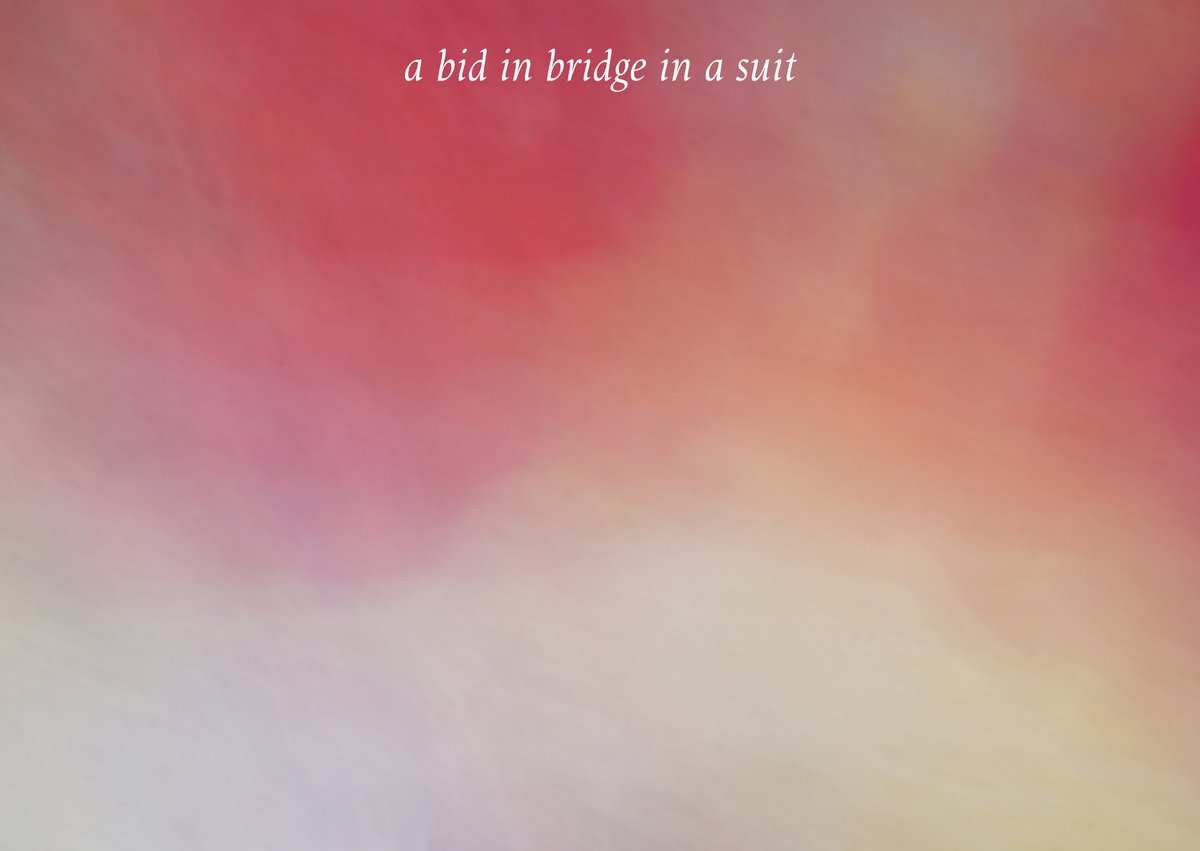a bid in bridge in a suit
Kristine Woods
September 21 – November 10, 2024
Opening: Friday 20 September, 7pm

Image: Kristine Woods, felt (detail), 2024
Design: Pedro Cid Proença
Where do we locate the threshold between inside and outside? Architecture grants or refuses access through doors and windows. In psychological terms we describe the boundaries between interior and exterior, subjective and objective. Metaphors are matters of architecture, states of feeling, sensations from the outside or the grumblings within. Kristine Woods’ installation, a bid in bridge in a suit, materialises from a scrutiny of permeability among thresholds.
This new installation, composed specifically for Bonner Kunstverein, draws energy from Woods’ fascination with the paintings of French artist Pierre Bonnard (1867–1947). Bonnard brought outdoor landscape into domestic rooms, confounding inside and outside. The distinguishing features of people and things are combined through colour, line, and scale. In the Bonnard painting, The Terrace at Vernonnet (1939), a figure emerges from the shrubbery. A woman holding a basket of harvested fruits shares the colours of berries. [1]
Extending the aspects of a Bonnard painting, Woods’ installation at Bonner Kunstverein proposes the following: The physical properties of bodies, walls, windows, structures, colours, objects, and materials share space as a sum of subject matter. Things intersect, overlap, or switch between foreground and background in succession; Or the ambient surroundings are available all-at-once as constantly shifting relations of proximity and scale. The world is a medium. A body is fully immersed. Coterminous.
In Woods’ installation, we enter the space of painting more than we enter a room exhibiting art. Navigating the situation heightens an awareness of proprioception, the body’s often unconscious adjustments to position, movement, pathways, and structures. Nothing hangs on the wall, it’s all in the room. The gallery is open to the landscape, what’s visible through windows outside the Kunstverein matters as much as the artist’s decisions, elements, constructions, and arrangements. Flowers in a vase inside tangle with the roots of plants outside. What is wild and what is order? From what roots do lines stem? Nothing is seen from the same angle. Some objects flood the space, pushing other objects/subjects to the edges. An enormous felt work divides the room or multiplies interiors. Painted wood beams function as a trellis, scaffolding, or a swing set. Figures and foliage are confused and interlaced with pattern and textile. The entire installation is a composition.
As art as vegetation as sensation, the whole is a living organism.
– GB and KW
______
[1] These visual conjugations arise from a kind of “pictorial intelligence” that differs significantly from verbal intelligence. Svetlana Alpers and Michael Baxandall wrote extensively about “pictorial intelligence”. The art historians demonstrated the importance of visual play independent of – not reducible to – linguistic play. The same acumen is demonstrable in Woods’ art. True, the title, a bid in bridge in a suit, could be a fine line of poetry. Certainly, written and verbal play (language) inform the artist’s methods of composition. Yet, the insistence of a pictorial intelligence is urgently experienced.
See: Svetlana Alpers, Michael Baxandall, Tiepolo and the Pictorial Intelligence, Yale University Press (1996).